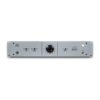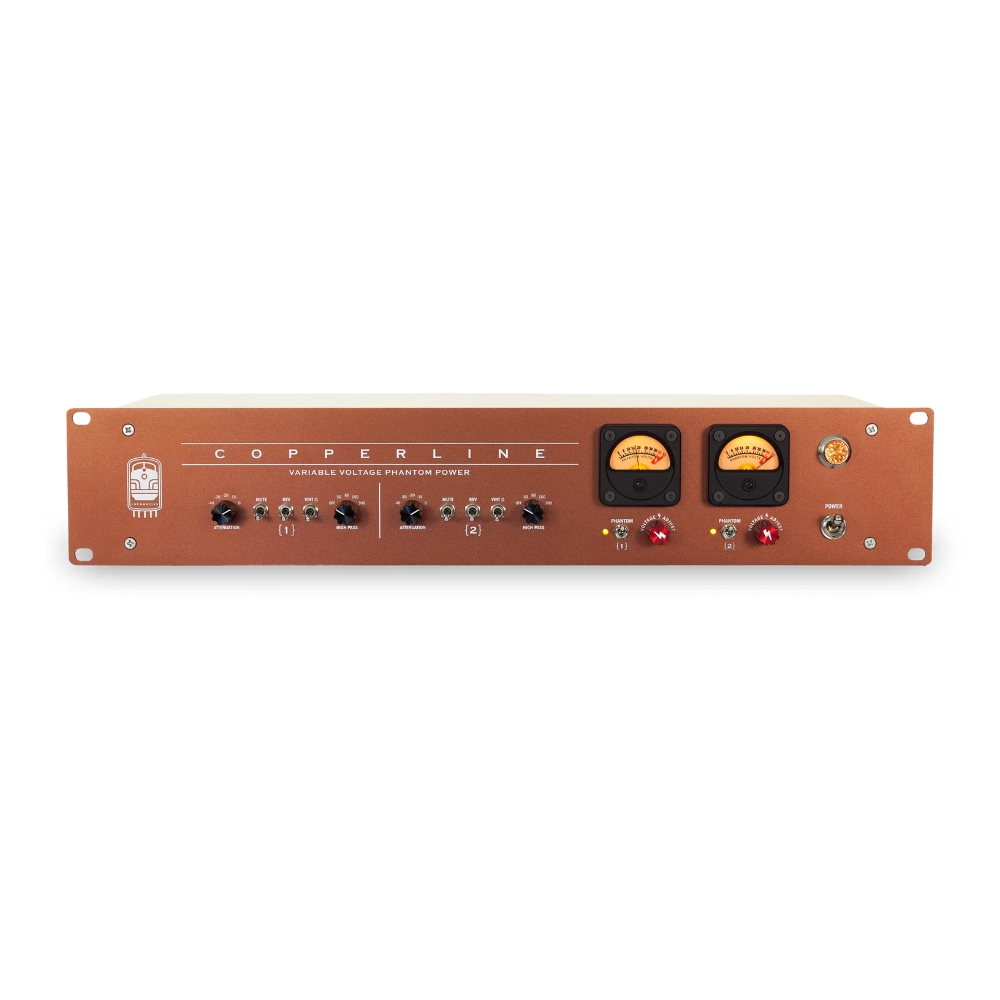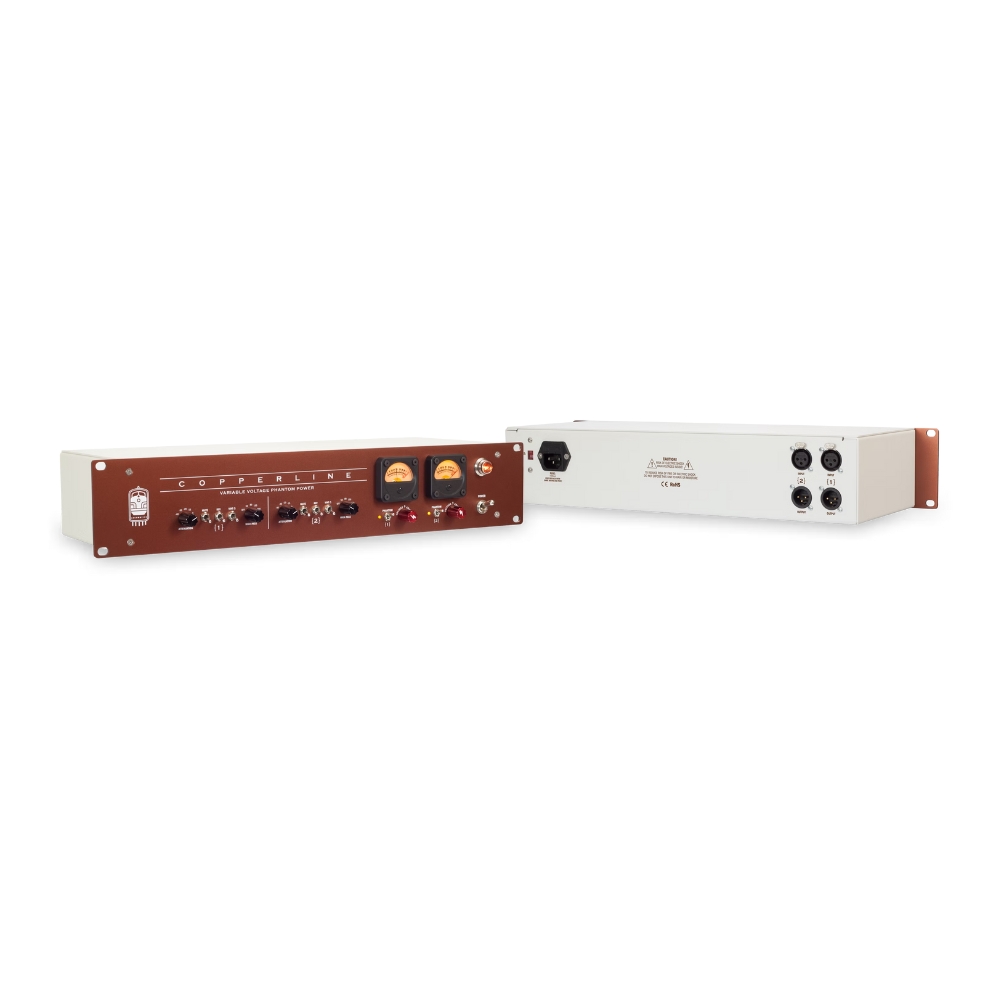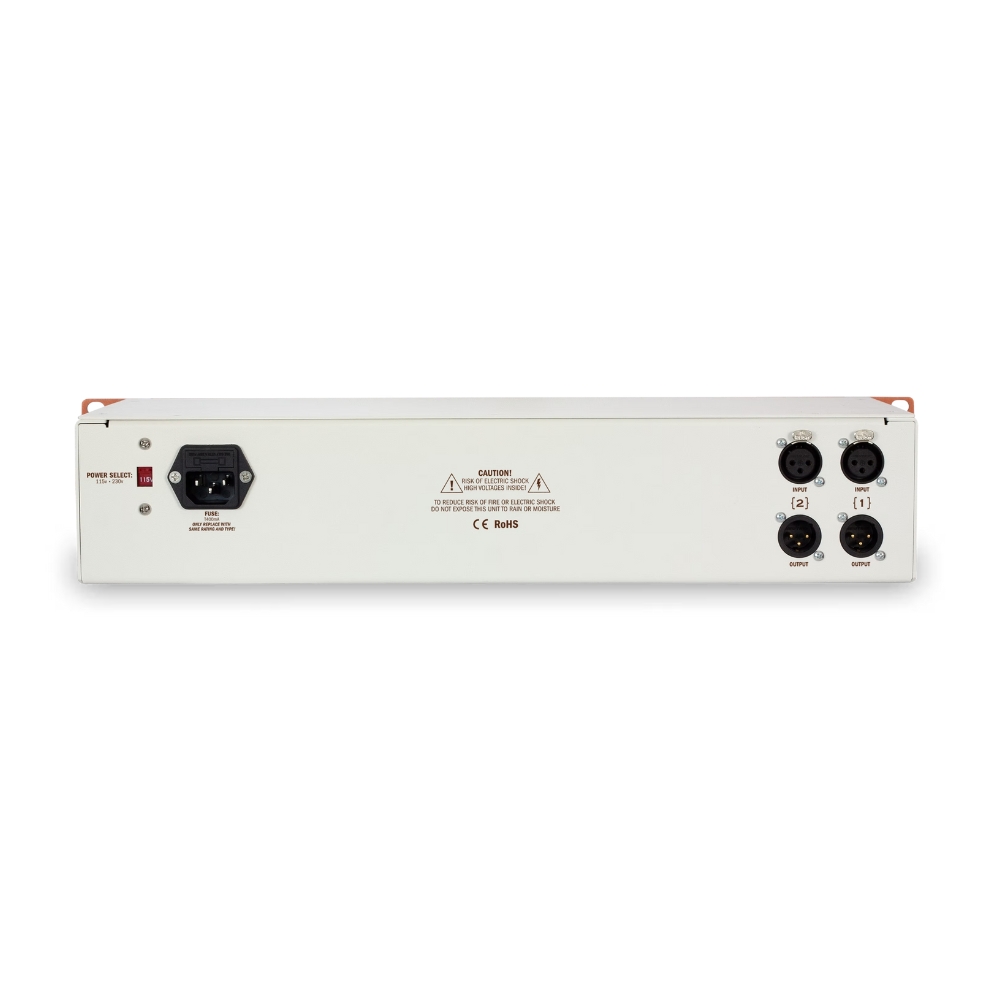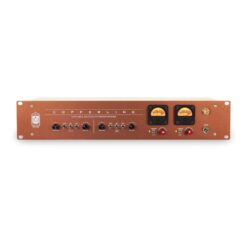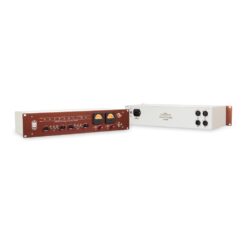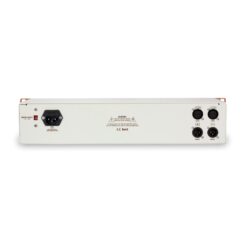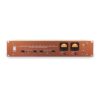Locomotive Audio Copperline – 2-Channel Utility Unit w/ Variable Voltage Phantom Power
$1,298.00
Versatile two-channel utility unit designed to sit between microphones and preamps or between line-level devices, offering a full suite of creative and protective tools. With features like a 5-position attenuator, high-pass filter, mute, polarity reverse, vintage load, and innovative Variable Voltage Phantom Power, Copperline lets engineers fine-tune their signal chain while safeguarding valuable gear. From slow-start phantom power that protects vintage transformers to the ability to creatively alter microphone behaviour, Copperline is the Swiss Army knife every studio needs.
Locomotive Audio Copperline – 2-Channel Utility Unit w/ Variable Voltage Phantom Power
OVERVIEW
A Swiss Army Knife for Audio Engineers
The Locomotive Audio Copperline is built to be the ultimate problem-solver and creative tool for modern and vintage studios alike. Designed to be placed between microphones and preamps or between two line-level devices, Copperline packs two channels of indispensable functions into a compact form. Its 5-position attenuator, 5-position high-pass filter, polarity switch, mute, and Vintage Ω load allow engineers to sculpt tone, solve impedance mismatches, and keep sessions running smoothly without relying on a patchwork of adapters.

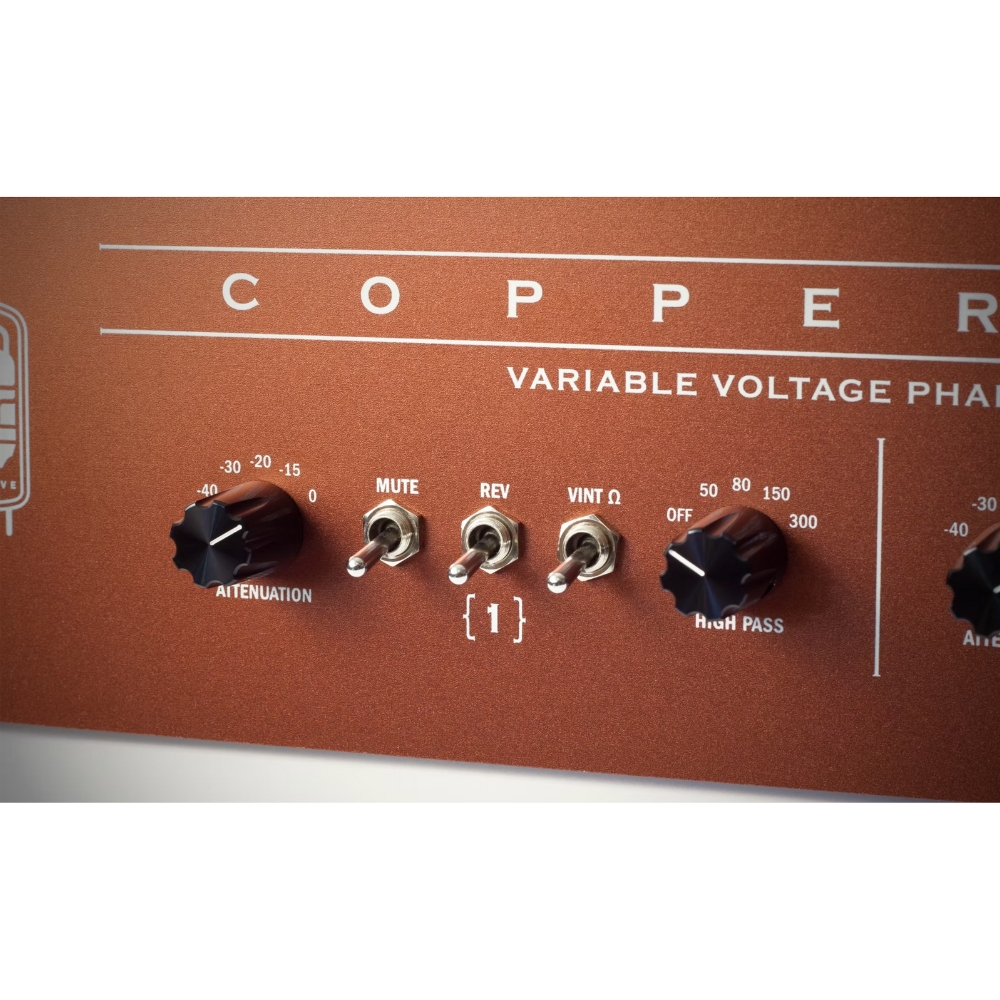
What truly sets Copperline apart is its Variable Voltage Phantom Power – a patent-pending design that allows you to alter the voltage feeding your microphones, unlocking new tonal characteristics and performance behaviors. Combined with slow-start phantom power that protects sensitive vintage transformers from damaging spikes, Copperline ensures reliability while inspiring creativity. Whether you’re driving a classic tube preamp, taming a powerful condenser, or experimenting with mic coloration, the Copperline is an essential addition to any signal chain – combining safety, flexibility, and sonic discovery in one rugged unit.
KEY HIGHLIGHTS
Phantom Power
Arguably, the most critical device in your recording chain, the microphone, is only as good as the power that runs it. Phantom power is something most of us take for granted. It exists in our outboard preamps, mixers, or even compact, inexpensive boxes with “wall wart” power adapters.
Would you put cheap tires on a Ferrari? No. Then why use generic, “whatever works” phantom power with your treasured microphone collection?
Not all phantom power supplies are created equal. It’s important to understand that the standard phantom power voltage range for professional microphones is 48 +/- 4 volts (i.e., 44 to 52 volts). Some supplies don’t offer this range of voltages. Even if 44 volts – 52 volts of phantom power is provided, there may be significant noise or a lack of instantaneous current available for the microphone to meet the intended specifications of the microphone manufacturer.
The Locomotive Copperline offers up to 52 volts of phantom power from a high-current and quiet supply. It will make your mics sound more detailed and transient-rich than from low-cost supplies or from some outboard preamps that consider phantom power an afterthought.
Slow-Start Phantom Power
Protect your prized vintage input transformers and quiet the turn-on pops.
The Locomotive Copperline features slow-start phantom power. Because the Copperline is intended to be set up between the mic and the mic preamp in the signal chain, a gentle onset of phantom voltage (5 seconds), rather than a quick power-on, will prevent voltage transients at the mic preamp input. In addition, a slow-rising phantom power voltage helps quiet turn-on pops and, most importantly, protects your vintage input transformers.
For example, there are sad stories about vintage V72 modules (modified to include phantom power) whose input transformer windings were damaged by substantial phantom power voltage spikes, sometimes over 1,000 volts within the transformer windings!
While the Copperline uses phantom power output blocking capacitors (electrolytic and film in parallel for you audio tech nerds), it’s still essential to use a slow-start supply. This is because a phantom-blocking capacitor can still transfer an instantaneous voltage spike to the next device in line. The combination of Copperline’s slow-start phantom and phantom-blocking capacitors assures you that your vintage preamps will never be exposed to this damaging threat.


Variable Voltage Phantom Power
Change the character and performance of your phantom-powered microphone with a single knob.
With Copperline’s all-new Variable Voltage Phantom Power, you will discover how the voltage sent to your microphone can affect its behavior. Never before has a device been designed to purposely alter phantom power voltages in search of new character in an old microphone! After all, we’re more than just engineers; we’re artists with the never-ending desire to find new combinations to get a unique sound. So different that nobody will know how we achieved it. That’s part of the fun in audio engineering – happy accidents.
We are intentionally misusing technology to affect the resulting tonal characteristics of a microphone. Variable Voltage Phantom Power is such a unique concept that Locomotive and its inventors have a patent pending for the concept and design.
The effect is all dependent on the individual microphone design. There is NO single set rule on how a microphone will respond to lower phantom power supply voltages. And because each microphone’s internal circuitry is unique, you’ll be surprised by how tiny variations in phantom voltage will change the behavior of each microphone.
We’ve found that loud and transient-rich sources like percussion, guitar, and bass cabinets have a much more apparent effect on the sound when dropping voltage.
Dropping the voltage on a mic can have several effects on its performance, but it will never damage a microphone.


Below is a list of qualities that your microphone may exhibit with lower phantom power voltages:
- Lower output level (can be useful in creating a “pad” for mics that don’t have one).
- Lower output level and lower headroom (the mic will need more gain from the preamp, but also have distortion and a different sonic footprint from the mic and the pre).
- Same output level, lower headroom (loud sources will distort).
- A change in frequency response, sometimes apparent frequency response, due to transients being less detailed. It may sound “darker” or more “smooth”.
- No change at all. Once phantom voltage has dropped enough, the mic stops output entirely.
- No change at all and just more noise.
Passive Signal Tools
Use Copperline between microphones and preamps or between two line-level devices.

Born out of necessity, Copperline was conceived by producer and co-inventor Will Edwards. He needed a way to connect his large collection of outboard gear and make each piece “play nice” with one another. Below is an example of a problem that can be solved by using the Locomotive Copperline.
How do you connect a Neumann Fet 47 to a Telefunken V76 preamp, running through a vintage UREI 1176 compressor, and finally, into a high impedance modern Pro Tools setup?

With all of your passive tools in one place, the need for XLR barrel connectors is eliminated.
Vintage Ω:
Want to load down the signal of the device (mic or line level) connected to the input of the Copperline? The ‘Vintage Ω’ or ‘Vintage Load’ switch places an 825 ohm resistor across pin 2 and pin 3 of the input XLR. This can be useful when the input impedance of the device connected to the output of the Copperline is high. Some microphones or line-level devices actually sound better with a heavier/lower Ω load. We know that some vintage preamps, compressors, and EQs actually require a 600-ohm load to sound “correct.” With the Vintage Ω Switch, you can easily plug in a unit requiring a 600 Ω load, then easily A/B between the two different loading impedances.
Example: If the output of the Copperline is connected to the 10kΩ – 20kΩ line inputs on an audio interface, switching on ‘Vintage Ω’ places an 825Ω resistor in parallel with the input impedance of the interface, now making the input impedance 762Ω – 792Ω. While not exactly 600Ω, anything under 1kΩ will have a great effect on the audio. 825Ω was chosen as a happy medium because if the attenuation rotary switch is placed in any position besides unity, then 825Ω is placed in parallel with the functioning impedance 1200-1500 ohms of the ‘Attenuator’ switch rather than the device connected to the output of Copperline. In that case, the impedance is dropped to 488Ω – 532Ω; again, close enough for Rock ‘N’ Roll!
Polarity:
Simply put, this switch reverses the polarity of the signal.
Mute:
Mute your signal, no matter where any of your other Copperline switches are set to. This switch can also help to determine connection problems and allow for troubleshooting without changing other settings.
High Pass:
The 5-Position High Pass Filter offers 5 different frequency selections to manipulate your audio: Off, 45 Hz, 75 Hz, 150 Hz, and 300 Hz. A mu metal shielded custom wound inductor offers low-noise high pass filtering on low-level mic signals. The high-pass cutoff frequencies are dictated by the output impedance of the device connected to the input of the Copperline. Many microphones are in the range of 150Ω, and therefore, the basis of the frequency selection in the Copperline high-pass design.
Please see the graph below showing how the corner frequency of the high-pass filter changes as the source impedance of the device connected to the input of the Copperline changes.
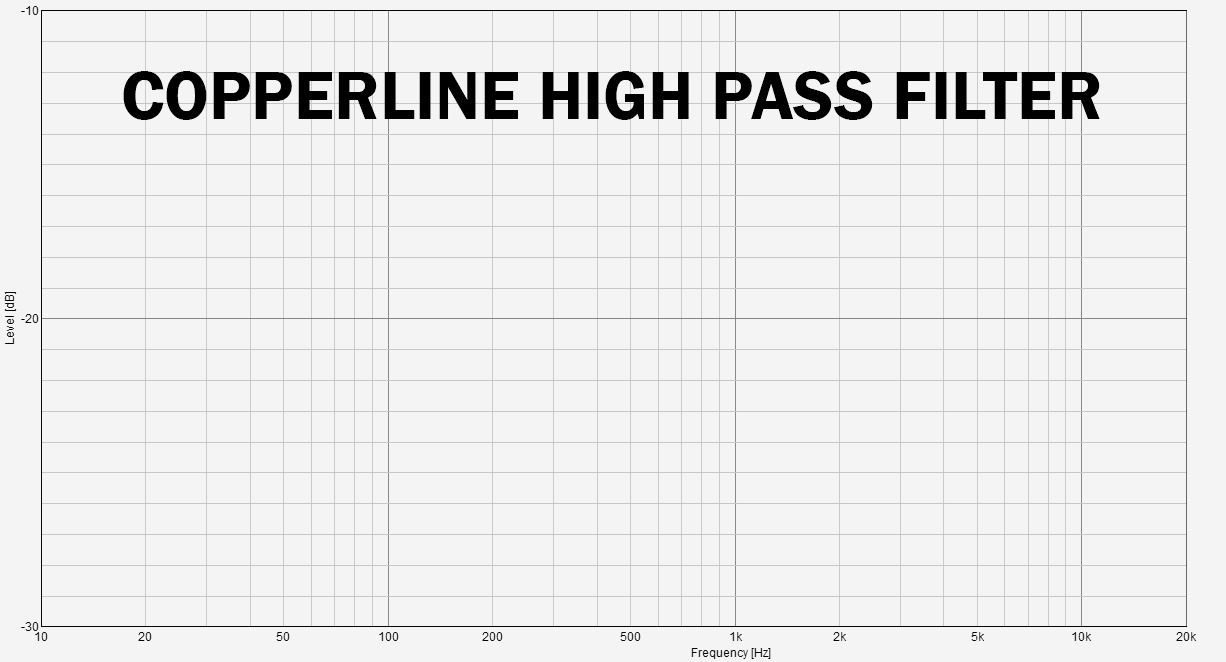
Attenuation:
The 5-Position Rotary Switch Attenuator Pad offers 5 different levels of attenuation: Unity,15 dB, 20 dB, 30 dB, and 40 dB. When switched between 15-40 dB of attenuation, the Input impedance is 1200 -1500 ohms. If set to unity, the Copperline input impedance is determined by the device following (connected to the output) of the Copperline.
Copperline Creative Hacks:
Place Channel 1 and Channel 2 in series.
You can change the order or stack features to get even more out of the Copperline. Need 60dB of attenuation? No problem. Just use 40dB from channel 1 & 20dB from channel 2, or 30dB from both channels. What happens when we attenuate channel 1 by 30dB (47Ω output impedance), then send the signal to channel 2 and a high-pass filter? The effective cutoff frequencies will actually be a little over half of the frequencies marked on the front panel. Or stack two high-pass filters in series?
FEATURES
- Two-channel utility unit for mic-to-preamp or line-to-line applications
- Variable Voltage Phantom Power for creative mic coloration and tonal exploration
- Slow-Start Phantom Power protects vintage transformers and reduces turn-on pops
- 5-position Attenuator (Unity, -15 dB, -20 dB, -30 dB, -40 dB)
- 5-position High-Pass Filter (Off, 45 Hz, 75 Hz, 150 Hz, 300 Hz)
- Polarity Reverse switch for phase correction
- Mute switch for quick signal cut and troubleshooting
- Vintage Ω Load switch for authentic transformer-loaded tone shaping
- Can be used between microphones and preamps or between two line-level devices
- Passive signal tools eliminate the need for XLR barrel adapters
- Channels can be placed in series for stacked attenuation or filtering effects
- Hand-built in the USA with rugged construction
- Lifetime warranty
TECHNICAL SPECS
Channels: 2 independent signal paths
Phantom Power: Variable voltage up to 52V, slow-start protected
High-Pass Filter: Off / 45 Hz / 75 Hz / 150 Hz / 300 Hz
Attenuation: Unity / -15 dB / -20 dB / -30 dB / -40 dB
Vintage Load: 825Ω resistor across input (approx. 600–800Ω effect depending on impedance)
Input/Output: XLR balanced I/O
Power: Internal high-current phantom power supply, quiet operation
Construction: Rugged steel chassis, hand-built in the USA
Application: Mic-to-preamp or line-level-to-line-level integration
Related products
Channel Strips
OUTBOARD
OUTBOARD
OUTBOARD
OUTBOARD
500 Series
OUTBOARD


